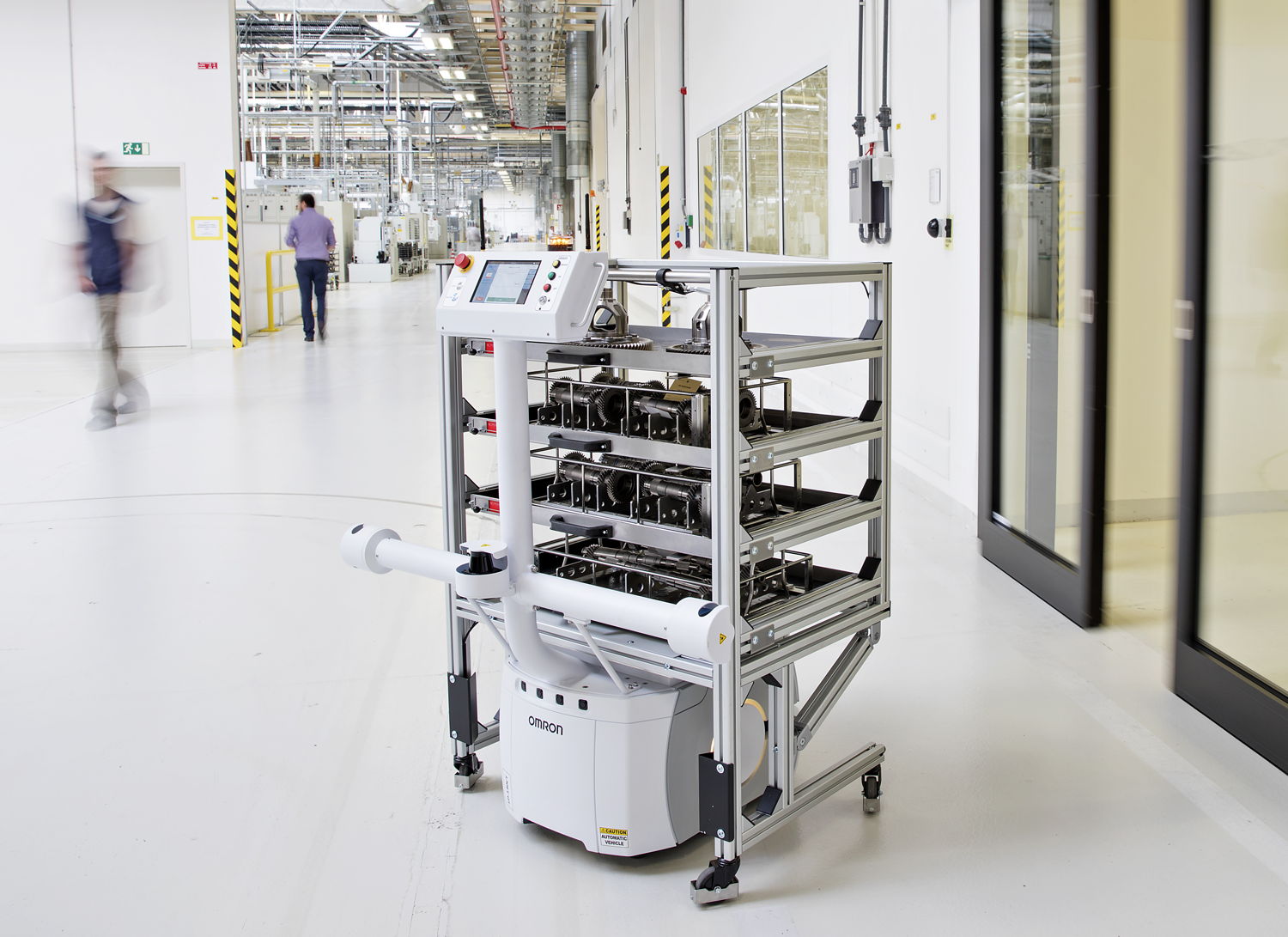ŠKODA AUTO uses fully autonomous transport robot at Vrchlabí plant

› A fully autonomous transport system carries parts between the mechanical measuring
centre and processing machines
› A guided tour is all the robot needs to grasp its route and environment
› Digitalisation and Industry 4.0 are cornerstones of ŠKODA AUTO’s 2025 Strategy
Mladá Boleslav, 11 June 2018 – As a key cornerstone of its 2025 Strategy, ŠKODA AUTO is
rigorously advancing the digitalisation of its production process. As of now, the Czech car
manufacturer is using a fully autonomous, self-learning transport robot at the Vrchlabí
component plant. This robot is able to recognise obstacles along its journey through the
plant and to incorporate other information from its surroundings when planning its route. If
necessary, it changes its course to always get to its destination as quickly as possible. It
thereby contributes to further improving safety at work and the efficiency of transport
processes at the plant.
“It’s been a conscious decision to use ŠKODA AUTO’s first fully autonomous robot at the Vrchlabí
plant. With it, we’re once again highlighting the plant’s key significance as an ultra-modern hightech
location,” said ŠKODA AUTO Board Member for Production and Logistics, Michael Oeljeklaus.
“With the new transport system, we are consistently continuing to introduce technological
innovations at our plants in keeping with Industry 4.0,” added Oeljeklaus.
On one trip, the transport robot can carry a load of up to 130 kg and chooses the correct paths fully
autonomously. Unlike traditional automated transport systems, it does not require lane guidance in
the form of induction loops, magnetic strips or reflectors. To learn the route, the vehicle only needs
to be guided between the stations once via a tablet or joystick. In doing so, it captures its
environment as well as changes to its surroundings all by itself and adapts its route if necessary.
Sophisticated, state-of-the-art technology enables the robot to navigate its environment: using
sensors and laser scanners, it recognises vehicles and stationary obstacles as well as people
crossing its path. The control system calculates the approach speed and detects if a collision is
imminent. In this case, the robot stops by itself or takes evasive action. Unlike other systems used
at ŠKODA AUTO, it immediately adjusts its route based on information from its surroundings,
without having to stop in the process. If the fully autonomous robot detects that it will regularly
encounter obstacles at a specific point along its journey, it changes its route permanently. If
necessary, the electrically powered system is able to travel to all of the destinations at the Vrchlabí
plant, which covers 16,000 m2.
The robot completes 120 trips per day and travels a total distance of 35 km on its route between the
mechanical measuring centre and the processing machines. The testing and pilot phases have
already been completed; the robot is in regular use at the factory starting from June 2018.
The increasing production numbers at ŠKODA AUTO translate into higher utilised capacity for the
plants and more traffic in the production areas. The autonomous robot contributes to the continuous
improvement of work safety in Vrchlabí and helps to minimise work risks.
In production, ŠKODA AUTO is systematically turning to technology from Industry 4.0, such as
cooperating robots. These are used in the production of direct-shift transmissions at the Vrchlabí
plant and support the employees with one of the most sensitive tasks in transmission production –
inserting the gear actuator piston. A handling robot also supplies dozens of machines with parts
and returns empty containers to the warehouse. The extensive ‘transparent factory’ IT system also
forms part of operations.
ŠKODA AUTO defined the digitalisation of products and processes as one of the cornerstones of its
2025 Strategy. Further central areas of activity include the electrification of the ŠKODA model
range, the conquering of new markets and the brand’s expansion into new business areas relating
to traditional car manufacturing through the addition of various mobility services.
 Sophisticated, state-of-the-art technology enables the robot to navigate its environment: using sensors and laser scanners, it recognises vehicles and stationary obstacles as well as people crossing its path. The control system calculates the approach speed and detects if a collision is imminent. In this case, the robot stops by itself or takes evasive action.
Sophisticated, state-of-the-art technology enables the robot to navigate its environment: using sensors and laser scanners, it recognises vehicles and stationary obstacles as well as people crossing its path. The control system calculates the approach speed and detects if a collision is imminent. In this case, the robot stops by itself or takes evasive action. The autonomous robot contributes to the continuous improvement of work safety in Vrchlabí and helps to minimise work risks. It recognises people crossing its path as well as other vehicles and stationary obstacles.
The autonomous robot contributes to the continuous improvement of work safety in Vrchlabí and helps to minimise work risks. It recognises people crossing its path as well as other vehicles and stationary obstacles.